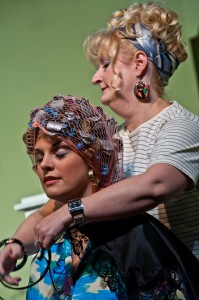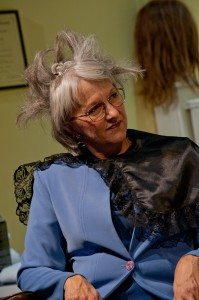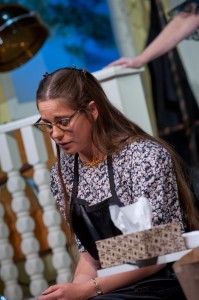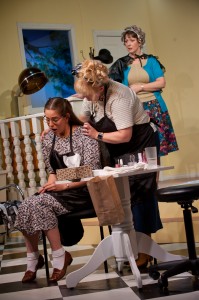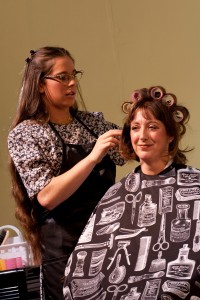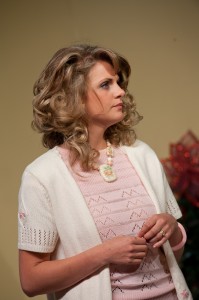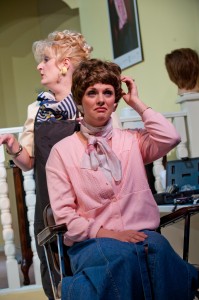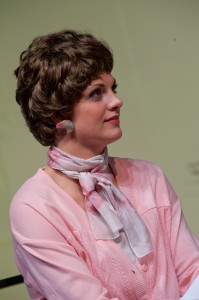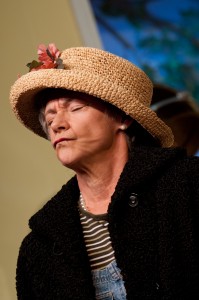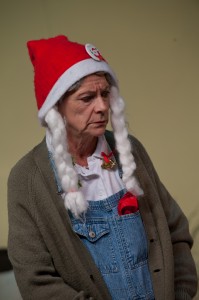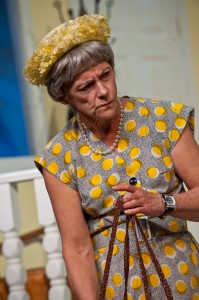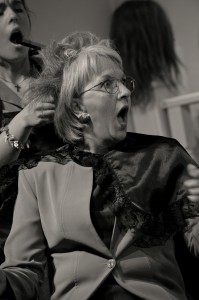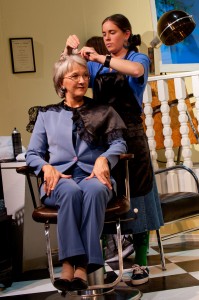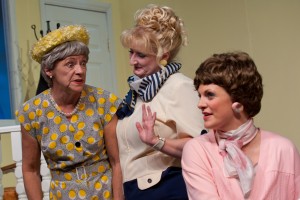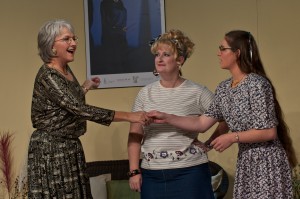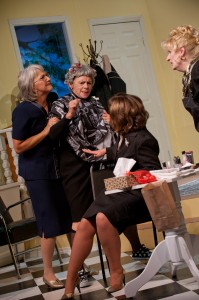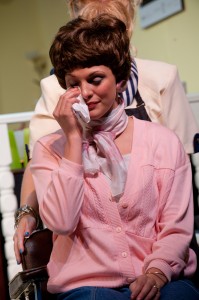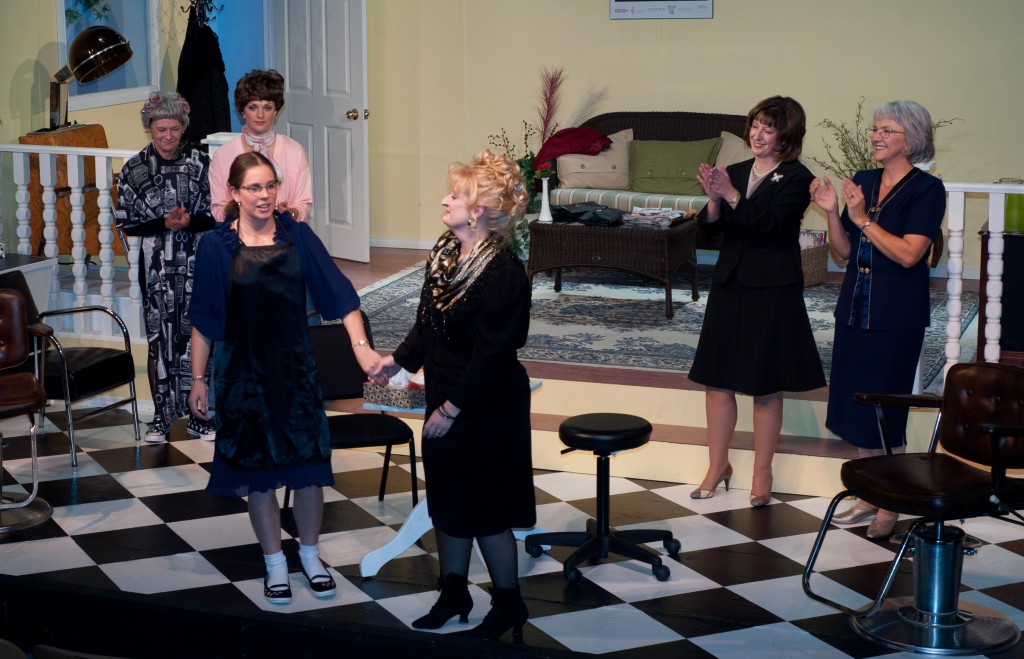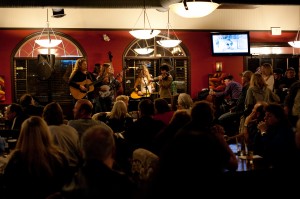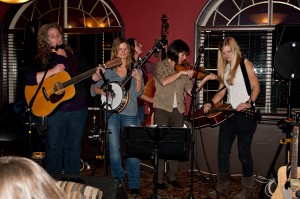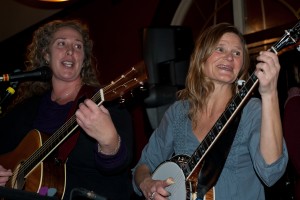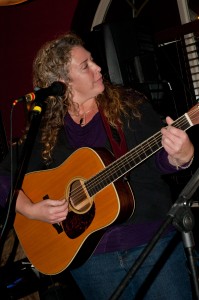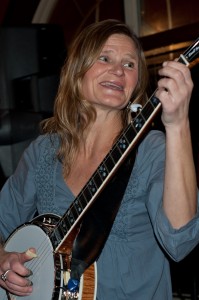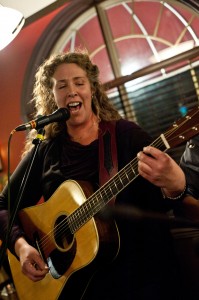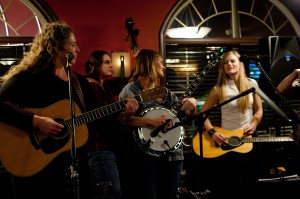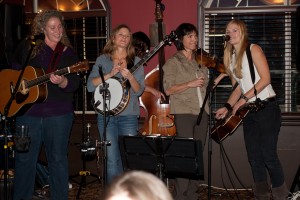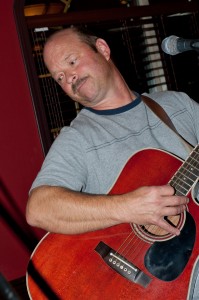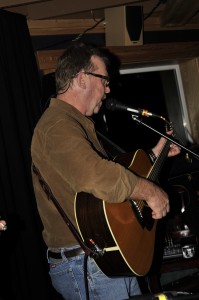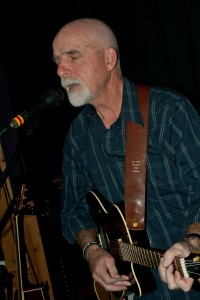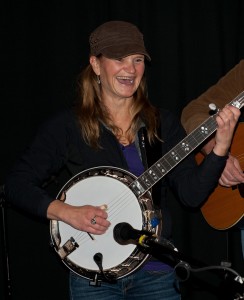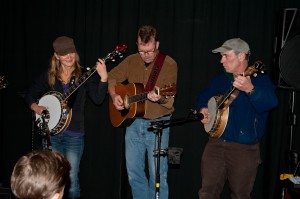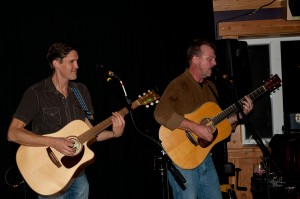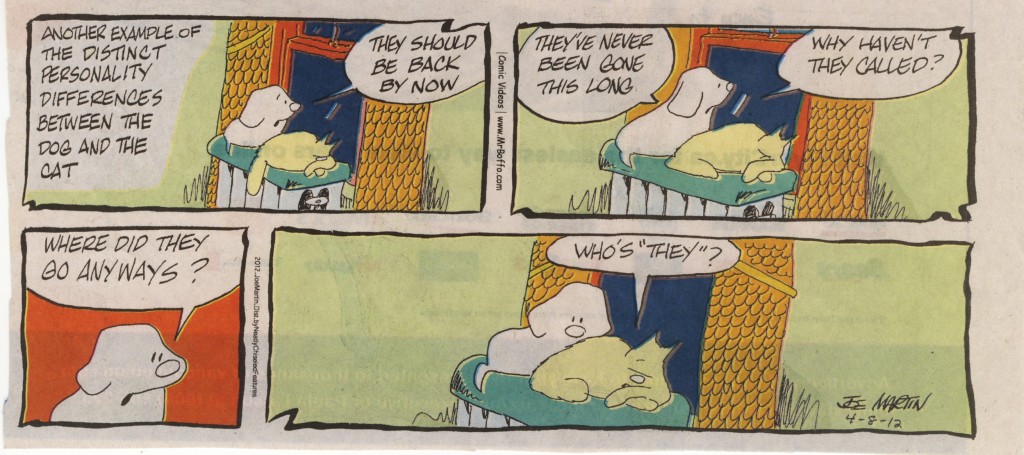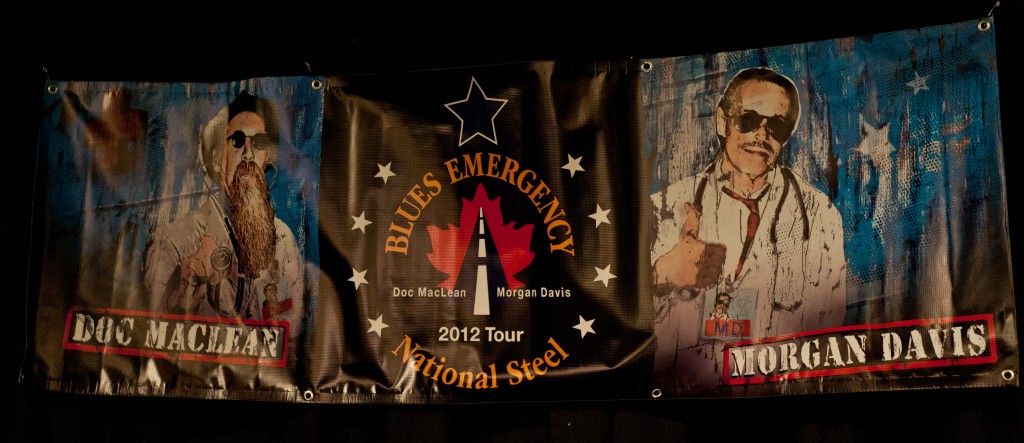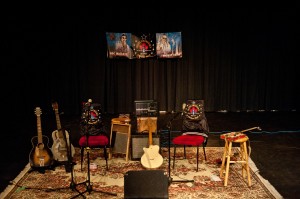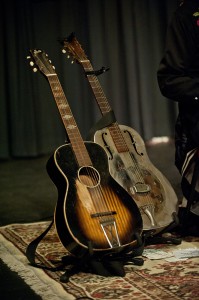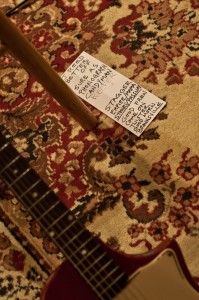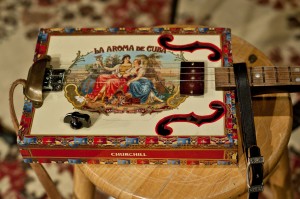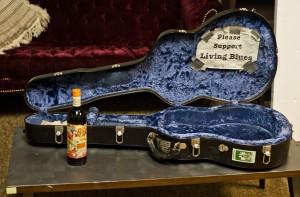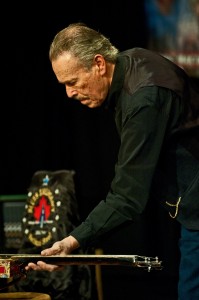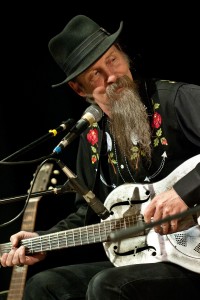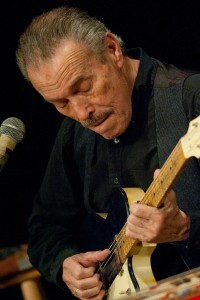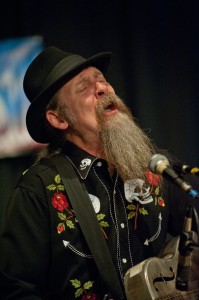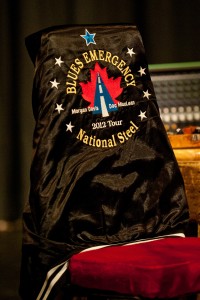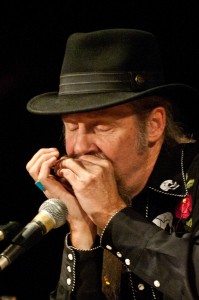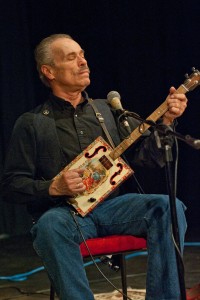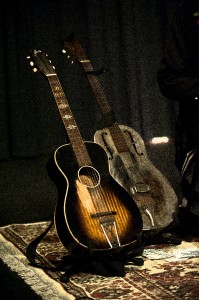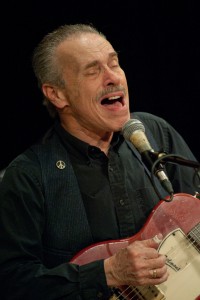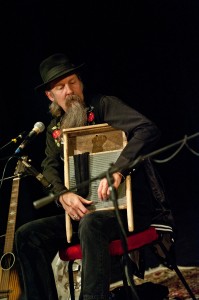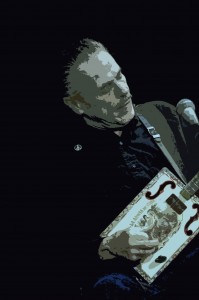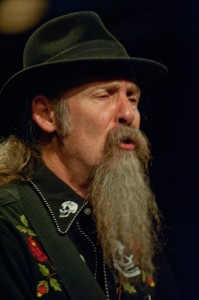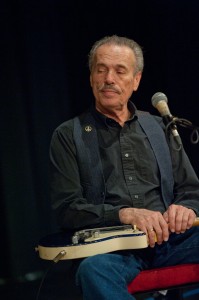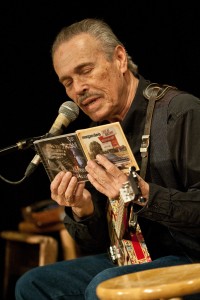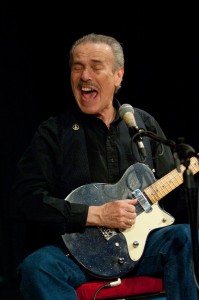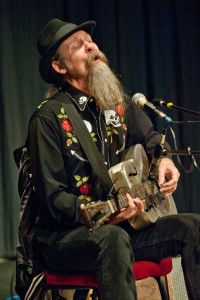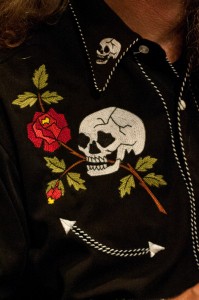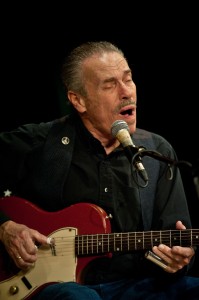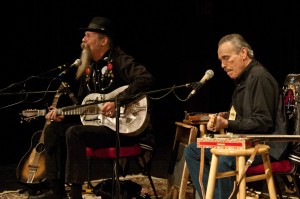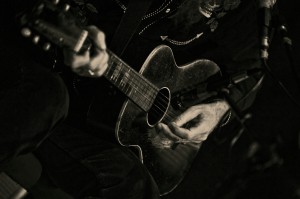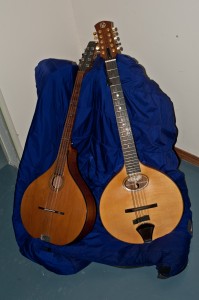 I am often asked “what are the instruments you are playing”. The short answer is an Irish Bouzouki, on the left, and on the right, an Irish Cittern. They are two mandolin like instruments that you are unlikely to find on the rack in your average music store. Generally speaking these are custom built instruments hand made on an individual basis. There may be production models out there (I think Fender may have one) but that would be unusual. The instruments are generally used in Celtic or similar music. There is a slow creep of the instrument into other musical styles. For instance Steve Earle played an Irish Bouzouki at recent Key City Concert in Cranbrook. Both instruments are recent inventions, or re-inventions, that only go back to around the 1960s. Both have interesting histories.
I am often asked “what are the instruments you are playing”. The short answer is an Irish Bouzouki, on the left, and on the right, an Irish Cittern. They are two mandolin like instruments that you are unlikely to find on the rack in your average music store. Generally speaking these are custom built instruments hand made on an individual basis. There may be production models out there (I think Fender may have one) but that would be unusual. The instruments are generally used in Celtic or similar music. There is a slow creep of the instrument into other musical styles. For instance Steve Earle played an Irish Bouzouki at recent Key City Concert in Cranbrook. Both instruments are recent inventions, or re-inventions, that only go back to around the 1960s. Both have interesting histories.
The Cittern described as “a mandolin on steroids” is a perfect example of what goes round comes around or “there is nothing new under the sun”. In the 1960s the English folk performer and Luthier Stephan Sobell acquired a Portuguese Guittara that he started using to accompany traditional British songs. This instrument, with its convoluted history, is a 12-string instrument very much like the Cittern pictured above but with a very odd “porcupine nest” of tuning mechanisms at the top of the neck. Originally it was derived from the Elizabethan Lute during some English political incursions into Portugal way back before men wore trousers. To this day the playing style, using finger and thumb picks are more akin to archaic Lute styles than modern guitar styles. It is a finger picking technique that found its way to the Portuguese African colonies and into modern Afro/pop guitar music. The Portuguese Guitarra is very much alive today and is the predominant instrument for the accompaniment of traditional Portuguese Fado Singers. It goes without saying that it adds a distinctive voice to this Portuguese music (check the Youtube videos of the singer Mariza or better yet get your hands on the DVD “Mariza: Live in London”). But I digress from Stephan Sobell’s adventures back in the 60s. Although enamoured with the instrument he found it was not quite suitable for British Folk music. To solve the problem he started building similar instruments of his own design. He ended up with a 5-course (10 strings) instrument with a tuning system more suitable for Celtic music. In the end, because it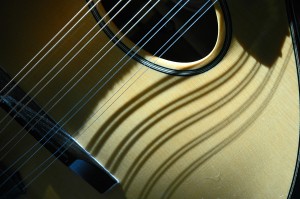 basically was a re-invention of an earlier English instrument called a Cittern that’s the name that stuck. To this day Stephan is the premier builder of Citterns and if you have to ask the price of one of his instruments it is a pretty sure bet you can’t afford one. He only builds two instruments a month. Check his website \stephan Sobell to view some truly beautiful instruments. Another exceptional builder is the English Luthier Roger Bucknall at Fylde Guitars. I play two Citterns. The first was built in 2001 by Jamie Wiens here in Cranbrook. It is a beautiful, if slightly flawed, instrument that was a one off experiment for both Jamie and myself. It is a very long scaled instrument (26 inch neck) with Koa back and sides and a carved Spruce top. It is equipped with a Highlander dual pickup system that, unfortunately, has the battery installed inside the instrument. It has a huge sound and unbelievable sustain. It is the
basically was a re-invention of an earlier English instrument called a Cittern that’s the name that stuck. To this day Stephan is the premier builder of Citterns and if you have to ask the price of one of his instruments it is a pretty sure bet you can’t afford one. He only builds two instruments a month. Check his website \stephan Sobell to view some truly beautiful instruments. Another exceptional builder is the English Luthier Roger Bucknall at Fylde Guitars. I play two Citterns. The first was built in 2001 by Jamie Wiens here in Cranbrook. It is a beautiful, if slightly flawed, instrument that was a one off experiment for both Jamie and myself. It is a very long scaled instrument (26 inch neck) with Koa back and sides and a carved Spruce top. It is equipped with a Highlander dual pickup system that, unfortunately, has the battery installed inside the instrument. It has a huge sound and unbelievable sustain. It is the 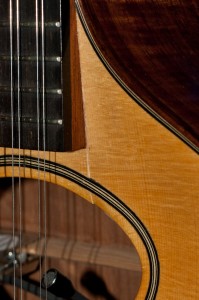 only Cittern that Jamie has built and when originally completed neither of us really knew how to tune or play it. There are a myriad of tuning options and after some research and experimentation we chose FCFCF (alternating fifth and fourth intervals). I tend to capo it at the second fret to allow me to use Irish Bouzouki fingerings. Alas, the instrument has developed a crack in the top and is currently in Kevin Turner’s Crow’s Nest Pass work shop (Chinook Guitars) being repaired.
only Cittern that Jamie has built and when originally completed neither of us really knew how to tune or play it. There are a myriad of tuning options and after some research and experimentation we chose FCFCF (alternating fifth and fourth intervals). I tend to capo it at the second fret to allow me to use Irish Bouzouki fingerings. Alas, the instrument has developed a crack in the top and is currently in Kevin Turner’s Crow’s Nest Pass work shop (Chinook Guitars) being repaired.
Lawrence Nyberg is an especially fine Canadian Luthier working 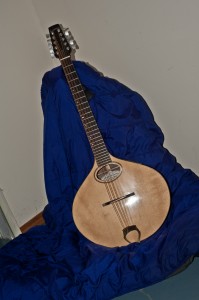 on Hornby Island (Lawrence Nyberg ) . He builds, guitars, Mandolins, Mandolas, Irish Bouzoukis and Citterns. He has a number of models including a 24 inch scale length model with a carved Spruce top, Rosewood back and sides and is equipped with a Headway pickup. The battery pack is conveniently
on Hornby Island (Lawrence Nyberg ) . He builds, guitars, Mandolins, Mandolas, Irish Bouzoukis and Citterns. He has a number of models including a 24 inch scale length model with a carved Spruce top, Rosewood back and sides and is equipped with a Headway pickup. The battery pack is conveniently 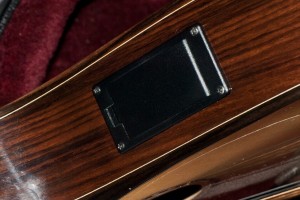 recessed in the side of the instrument. The instrument is not as deep through the body as the Wiens instrument and, while not as loud, it has a “punchier”, darker sound. Surprisingly, the instrument sounds much better when plugged-in and amplified. Tuned DADAD this is closer to the traditional Irish Bouzouki tuning of GDAD and the Mandolin tuning of GDAE so that switching between the three instruments only requires minor mental adjustments.
recessed in the side of the instrument. The instrument is not as deep through the body as the Wiens instrument and, while not as loud, it has a “punchier”, darker sound. Surprisingly, the instrument sounds much better when plugged-in and amplified. Tuned DADAD this is closer to the traditional Irish Bouzouki tuning of GDAD and the Mandolin tuning of GDAE so that switching between the three instruments only requires minor mental adjustments.
The Traditional Irish Bouzouki – that’s playing loose with the language. It is neither an Irish instrument nor Irish traditional. Originally it is a Greek instrument. Irish musicians visiting the Balkans in the 1960s adopted the Greek Bouzouki. It is a bowl backed 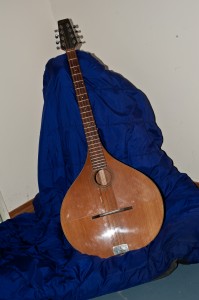 instrument that Irish Luthiers were unable or unwilling to duplicate. They ended up building a flat back instrument with a tuning system more suitable to Celtic music. It is looks very similar to a Cittern with only 4 courses (8 strings). At its most characteristic configuration the bottom strings are tuned in octaves (somewhat like a 12-string guitar) and is tuned GDAD. Although it has distinctive melodic possibilities its strength is in its use as a rhythm instrument. The chords tend to be simple modal chords that often are neither major or minor – the third note of the triad is often missing. Having such a long neck it is possible to play the same chords through three octaves without getting involved in gymnastic and difficult fingerings. In the bench mark bands of the 1970s (The Bothy Band, Altan, DeDannan) and in the hands of such performers as Donal Lunny and Andy Irvine the instrument quickly became well established. In this day and age there are not too many traditional Irish bands that do not include a Bouzouki. On the Key City Stage in Cranbrook the Irish Bouzouki has had a prominent presence in the bands of Danu, Dervish and Great Big Sea. The Studio / Stage Door has also seen its share of Bouzouki performers including the legendary Andy Irvine (one of the first performers on the instrument) and, in a different concert, Ron Kavanagh with his absolutely powerhouse trio of fiddle, bouzouki and button accordion. That particular concert at the Studio / Stage Door is one I will never forget.
instrument that Irish Luthiers were unable or unwilling to duplicate. They ended up building a flat back instrument with a tuning system more suitable to Celtic music. It is looks very similar to a Cittern with only 4 courses (8 strings). At its most characteristic configuration the bottom strings are tuned in octaves (somewhat like a 12-string guitar) and is tuned GDAD. Although it has distinctive melodic possibilities its strength is in its use as a rhythm instrument. The chords tend to be simple modal chords that often are neither major or minor – the third note of the triad is often missing. Having such a long neck it is possible to play the same chords through three octaves without getting involved in gymnastic and difficult fingerings. In the bench mark bands of the 1970s (The Bothy Band, Altan, DeDannan) and in the hands of such performers as Donal Lunny and Andy Irvine the instrument quickly became well established. In this day and age there are not too many traditional Irish bands that do not include a Bouzouki. On the Key City Stage in Cranbrook the Irish Bouzouki has had a prominent presence in the bands of Danu, Dervish and Great Big Sea. The Studio / Stage Door has also seen its share of Bouzouki performers including the legendary Andy Irvine (one of the first performers on the instrument) and, in a different concert, Ron Kavanagh with his absolutely powerhouse trio of fiddle, bouzouki and button accordion. That particular concert at the Studio / Stage Door is one I will never forget.
Last but not least – The distant, smaller, and possibly older cousin of Citterns and Bouzoukis is the Celtic Mandolin. It is somewhat different from the florid Bluegrass Mandolin. It is tuned the same 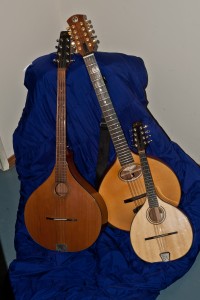 way (GDAE) but tends to have a rounder, mellower sound. Bluegrass players like the hard “bark” of an instrument that enables them to lay down the distinctive chop on the “two and four beat” of BlueGrass music. The Lloyd Loar Florentine BlueGrass design is thoroughly entrenched in North America and the round-hole models favored by Jazz, Classical, Brazilian and Celtic players are relatively hard to find.
way (GDAE) but tends to have a rounder, mellower sound. Bluegrass players like the hard “bark” of an instrument that enables them to lay down the distinctive chop on the “two and four beat” of BlueGrass music. The Lloyd Loar Florentine BlueGrass design is thoroughly entrenched in North America and the round-hole models favored by Jazz, Classical, Brazilian and Celtic players are relatively hard to find.
@@@@@@@@@@@@@@

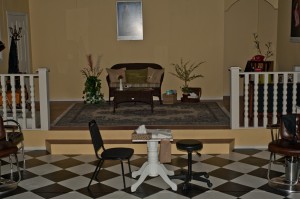

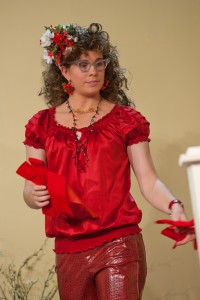
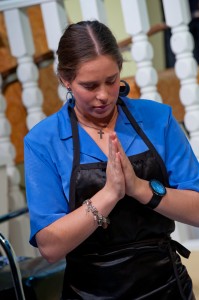
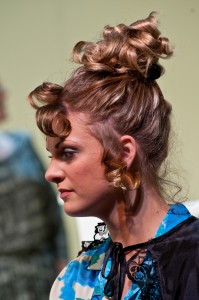
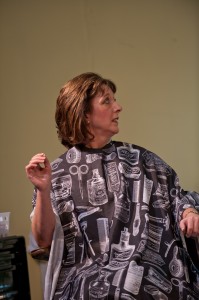
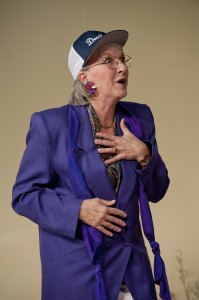
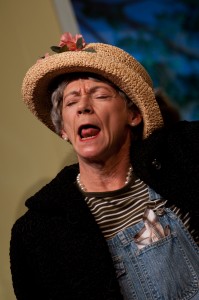 expect so that’s what they get. Despite that, this crazy old lady does undergo some moderation of her eccentricities within the the turmoil of the Salon. Truvy (Susan Hanson) seems to be the least affected by change. She reacts to the constellation of characters that inhabit her salon but she under goes no significant changes or transformations. In fact she doesn’t even get her hair done.
expect so that’s what they get. Despite that, this crazy old lady does undergo some moderation of her eccentricities within the the turmoil of the Salon. Truvy (Susan Hanson) seems to be the least affected by change. She reacts to the constellation of characters that inhabit her salon but she under goes no significant changes or transformations. In fact she doesn’t even get her hair done.